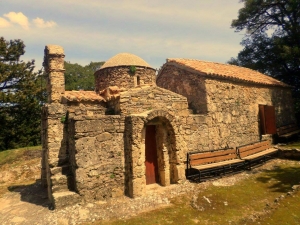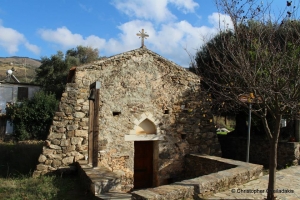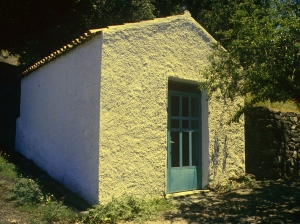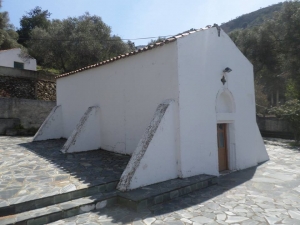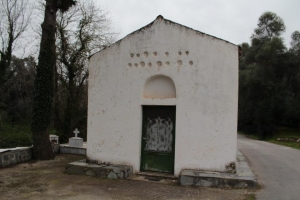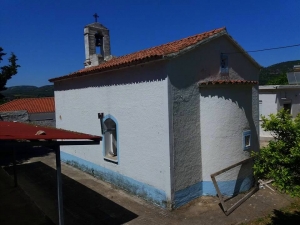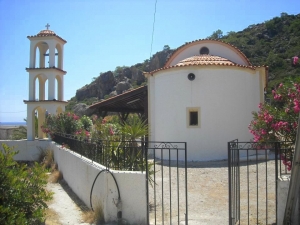The temple of Lord Christ is located at the beautiful neighbourhood Lazopouliana at village Temenia. It is a Byzantine church built at two phases; the first was in the 13th century and the initial temple was single aisled. The domed part of the church was added in the 14th century. The walls bear beautiful frescoes dating back from the 13th century.
One of the many old churches that adorn the village of Kandanos is St Catherine celebrating on November 25. It is a very old church. For years he was semi-ruined and without ceiling, therefore the frescoes got severely damaged. In recent years the Mayor of Kandanos restored the temple and its courtyard. The floor of the church is about one meter below the road level and this has resulted in serious problems with floods. Externally there is no plaster.
Next to the church of Panagia (Virgin Mary) at the settlement Anisaraki by Kandanos we find the single-nave vaulted church of Agia Paraskevi. The church bears frescoes in poor condition from the first half of the 14th century.
The church of Panagia at Anisaraki settlement, by Kandanos is a single-aisled vaulted temple with two reinforcing strainers (narthexes). There is a Venetian gate in the western wall, while the original entrance was on the south wall (we still see the arch and an inscription of 1614). The church bears frescoes in good condition, dating back to 1390-1400.
It is a small, single-aisled chapel with humble performance, but its inside is very rich with frescoes covering all its walls. The eyes of the Saints are missing by the Turks, but also byn the Christians that thought that these were therapeutic for illnesses. The walls were frescoed in 1328-1329, although the temple is older.
The temple of Prophet Elias in Trachinakos near Kandanos is located in the small cemetery of the settlement. Like in most of the Byzantine churches of Selino province, the external austere appearance comes in contrast with the rich interior with frescoes dating back to the 14th century.
The church of Agios Nikolaos in Kandanos (Selino province) is located in the center of the village. Its exterior reminds of a modern church, just like many Byzantine temples of Selino, but its interior bears traces of very old frescoes. The frescoes are hidden beneath the plastered walls, some parts of which have been revealed by the Archaeological Service.
The present-day settlement of Sougia is built on the site of ancient Syia, which flourished mainly in the late Roman times. Underneath the surviving cemeterial temple of Saint Panteleimon there are the remains of a three-aisled basilica with a 20.80m x 12.40m narthex, which has been excavated by A. Orlandos.











